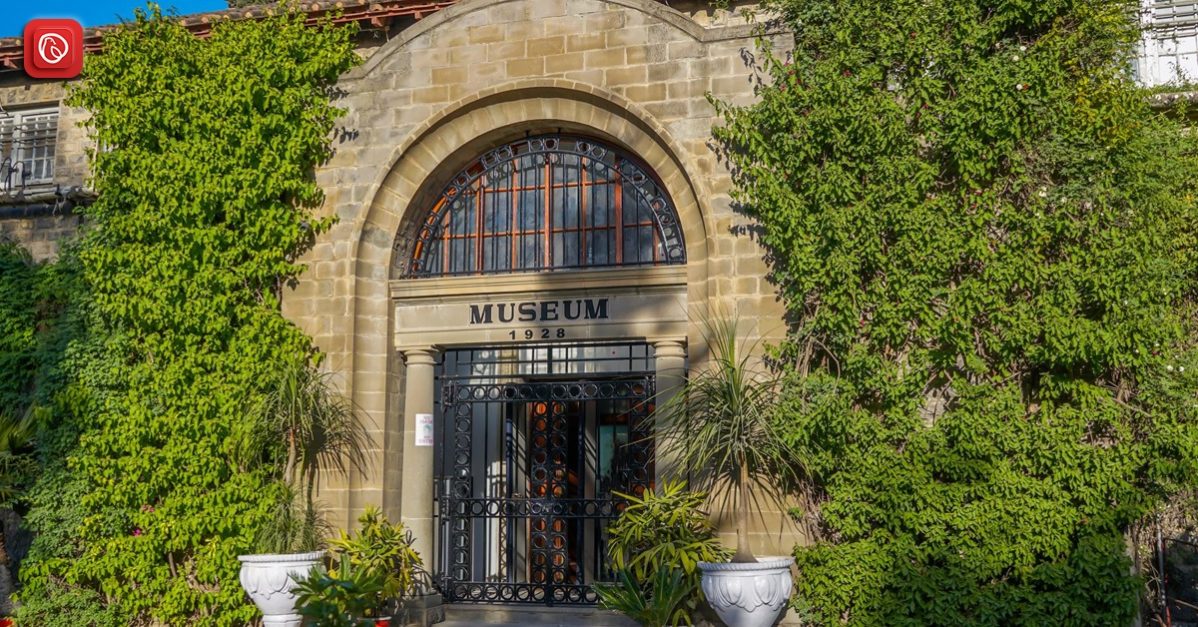Located on the Taxila Khanpur Road, the Taxila Museum is renowned for its ancient historical treasures. If you’re visiting Taxila, make sure to check out this destination. It used to be an example of global excellence. The museum’s displays take visitors to the 1960s, looking into a previous society. People passionate about old civilizations often come back to see them again.
The Taxila Museum in Pakistan has been recognised as a UNESCO World Heritage Site. It has an extensive collection of historical artefacts, stones, and sculptures. The museum’s notable collection showcases the art and heritage of the Gandhara civilization and Buddhism.
For individuals interested in history, the Taxila Museum is an incredibly fascinating place to visit. The Taxila Museum was declared a UNESCO World Heritage Site in the period of 1980, following Sir Alexander Cunningham’s excavation work that exposed its historical importance.
Graana.com has gathered information on the Taxila Museum, including its timing, location, etc.
History of Taxila Museum
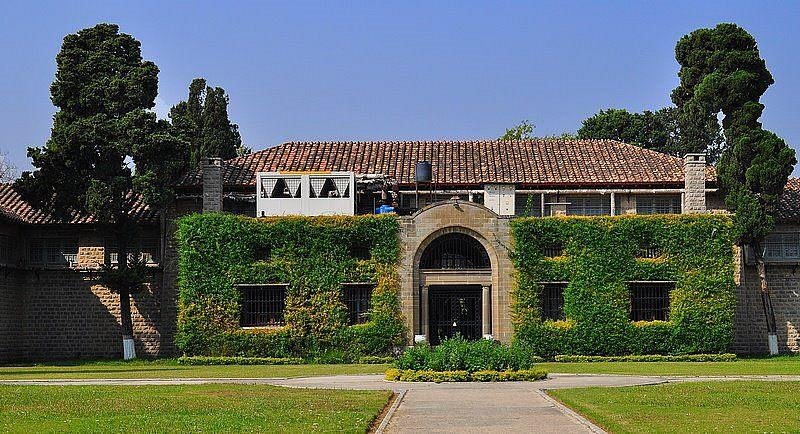
After the ruins of Taxila were discovered in the 1800s, Lord Chelmsford, the Viceroy and Governor-General of British India at the time, the laying of the foundation stone of the Taxila Museum dates to 1918. It took almost ten years to complete the museum, inaugurated on April 5, 1928. The museum features a central hall with galleries on each side displaying various artefacts.
The Taxila Museum is an important place because it contains ancient statues and artefacts from the nearby region. The museum displays around 7,000 pieces and provides valuable insights into ancient civilizations’ culture, history, and achievements.
Location
The Taxila Museum is near Bhir Mound, which is one of three important ancient towns in the area. It’s on the Kalabagh-Nathia Gali Road (N-125), which has many shops, hotels, petrol stations, and banks on the opposite side of the ancient city.
This route is a busy commercial road, making it easy for travellers from Punjab to reach Taxila by road. If road travel is not possible, the Museum and ruins of the Bhir Mound can still be accessed by train. Taxila’s railway station is just a 5-minute drive away.
Taxila Museum Timing
The timing of the Taxila Museum is mentioned below:
| Season | Day | Timing |
| Summers | Sunday to Monday | 9 am to 4 pm |
| Winters | Sunday to Monday | 8:30 am to 5 pm |
Artefacts at Taxila Museum
When you visit the Taxila Museum, you will find a variety of artefacts belonging to different areas. Here is the list of artefacts available in the museum now.
- Stone Sculptures
- Stucco and Terracotta Sculptures
- Gold and Silver Jewellery
- Coins
- Crockery
- Inscriptions and Writing Materials
- War Weapons
- Metal Wares and Miscellaneous Items
Stone Sculptures
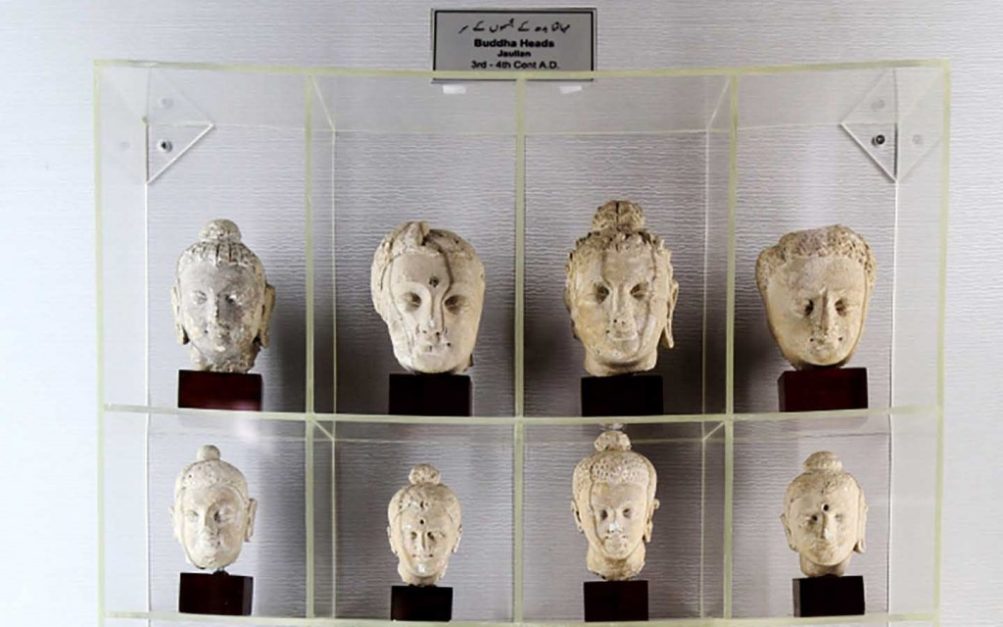
In the Taxila Museum, visitors can view a stunning collection of gravestone sculptures that date back to the 1st to 3rd century A.D. These sculptures are displayed prominently in the central main hall, which also houses a remarkable statue of Gautama Buddha, the founder of Buddhism.
The museum features sculptures of important figures, including Siddhartha, Maitreya, Padmapani, and Greek deities. Visitors can also explore relic caskets and different architectural elements in this section.
Stucco and Terracotta Sculptures
Sculptures made of terracotta and stucco dating back to the 1st to 5th century A.D. can be observed in the museum. The Sakas made these sculptures of Persians and showed their incredible artistic talent. They used materials like lime and gypsum, with stucco as the main. material.
The collection includes sculptures of Monks, Buddha, lay worshippers, Hindu Cyrenaic, bodhisattvas a unique scene of Mahaparinirvana (Buddha’s death). You can find these sculptures beautifully arranged in the northern gallery, giving you a glimpse of ancient artistry at its best.
Gold and Silver Jewellery
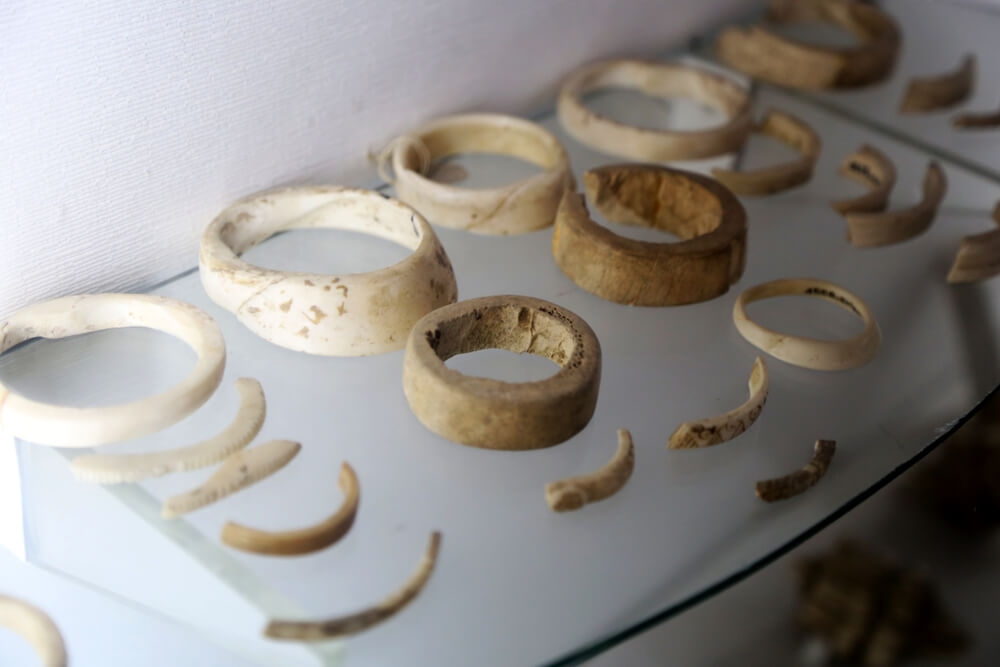
At the Taxila Museum, visitors can explore a remarkable collection of gold and silver jewellery that traces back to the 3rd century B.C. and the 1st century A.D. Among the exhibits, there are various types of jewellery to admire such as rings, pendants and much more. It is impressive to see the skilful workmanship of ancient times in these pieces.
Coins
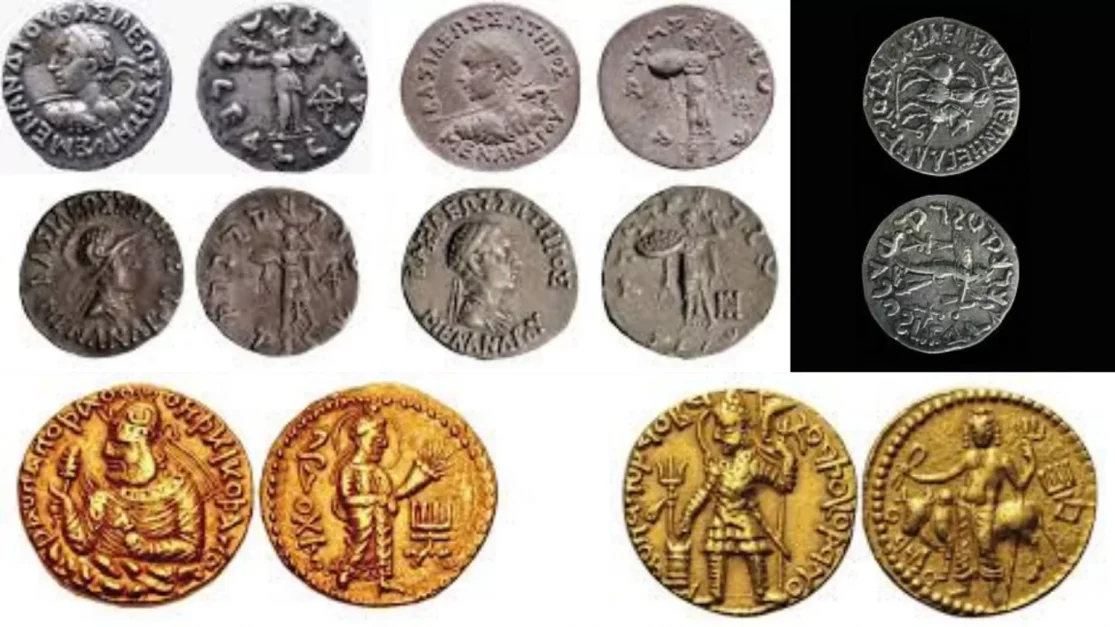
The collection of coins at the museum covers a wide range of periods and regions. From the 6th century B.C. to the 5th century A.D., Coins dating back to the Moriya period as well as those from Indo-Greek, Scythian, Parthian, Sassanian, Kushans, and Kidara Kushans, can be found. Particularly noteworthy are the coins from the White Huns and Ephthalites, which span from 40 to 510 A.D.
Crocker
The Taxila Museum’s crockery collection spans from the 6th century B.C. to the 5th century A.D. It comprises a wide array of artefacts, including jars, pots, water glasses, dishes and more, offering insights into the daily life and culinary practices of ancient civilisations.
Inscriptions and Writing Materials
At the museum, many ancient inscriptions in Brahmi, Kharoshthi, and Aramaic are on display. Ancient inscriptions found in Sirkap mention King Ashoka and his family. Birchbark inscriptions in Brahmi scripts were discovered at Julian Monastery, while Kharosthi scripts were used in the Gandhara civilization.
These inscriptions are usually found on cornice pieces or pedestals of statues. The museum also has various pottery fragments, gravestones, and inscribed writings excavated from the site.
War Weapons
The museum has an extensive collection of war weapons from the 1st to 5th century A.D. The area around Taxila was a crucial battleground between alluvial plains and Central Asia, and as a result, there are many historical war artefacts here. These artefacts are arrowheads, swords, javelins, and much more. You can see these artefacts on display at the museum.
Metal Wares and Miscellaneous Items
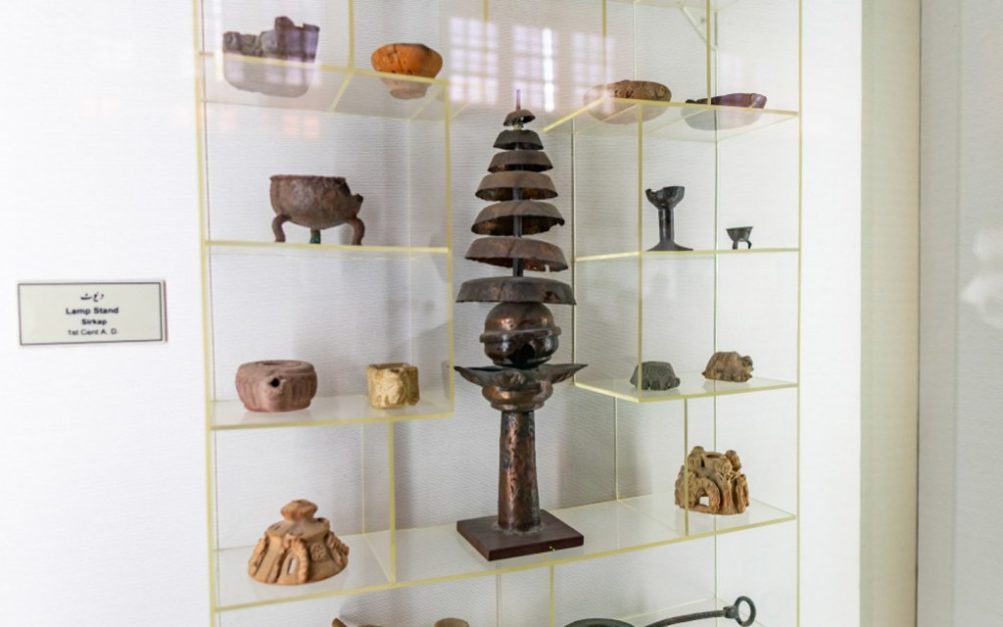
As a visitor, you can discover a vast assortment of metal artefacts that showcase the historical context of their respective eras. These items are crafted from metals such as silver, bronze, and copper. The collection includes household objects like spoons, cooking pots, mugs, and ornamental pieces that provide valuable insights into ancient lifestyles and craftsmanship.
Sun God
The Taxila Museum in Pakistan boasts an impressive collection of ancient depictions of the Sungod, which are some of the earliest portrayals of this deity. These artistic representations show the Sungod as a human figure with a brilliant sunburst radiating from its head.
The exhibits in the museum present the Sungod as a divine being, dressed in immortal attire, seated on a majestic lion, and leading a chariot pulled by four powerful horses. For many cultures, such as the Greeks, Indo-Europeans, and the people of Gandhara, the Sungod held great significance as a symbol of divine power.
Taxila Museum Ticket Price
These are the current prices for entry tickets at the Taxila Historical Museum:
| Ticket | Entry Fee |
| Children (Up to the age of 12 Years) | Rs. 10 |
| Adult | Rs. 20 |
| Foreigners (Tourists) | Rs. 500 |
Contact Number
Here is the contact information of the Taxila Museum;
Address: Archaeological Museum Taxila, District Rawalpindi, Punjab.
Phone: +92-51-9315476
Frequently Asked Questions
What is the Taxila Museum?
The Taxila Museum is a prominent archaeological museum located in Taxila, Pakistan. It houses many artifacts and relics from the ancient Gandhara civilization.
Where is the Taxila Museum located?
The Taxila Museum is in Taxila, a historical town in the Punjab province of Pakistan. Its address is Taxila Museum, Shahbaz Khel Road, Taxila, Punjab, Pakistan.
What are the museum’s operating hours?
The museum is open to the public from 8:30 AM to 5:30 PM, six days a week.
Is the Taxila Museum closed on any specific holidays?
Yes, the museum is off on Fridays and certain national holidays. It’s a good idea to check in advance if you plan to visit on a holiday.
How much is the ticket price for the Taxila Museum?
As of my last update, the ticket price for the Taxila Museum is as follows:
- For Pakistani nationals: 20 Rupees
- For foreign tourists: 500 Rupees
- Children under the age of 12 may have free entry.
Do they offer guided tours at the museum?
Yes, the museum often provides guided tours to visitors. These tours can enhance your understanding of the exhibits and the history of Taxila.
Is photography allowed inside the museum?
Visitors can take photos inside the museum for personal use but must respect the rules and privacy of others.
Are any special exhibitions or events held at the Taxila Museum?
The museum hosts special exhibitions and cultural events. Check the museum’s website or contact them for information.
Is there a parking facility available at the museum?
Yes, the Taxila Museum typically has parking facilities available for visitors. You can park your vehicle nearby for convenience.
Can I purchase souvenirs or books related to Taxila at the museum?
Yes, the museum often has a gift shop for souvenirs, books, and other items related to the Gandhara civilization and Taxila’s history.
If you want to know more about other Museums in Lahore, Follow Graana blog.
